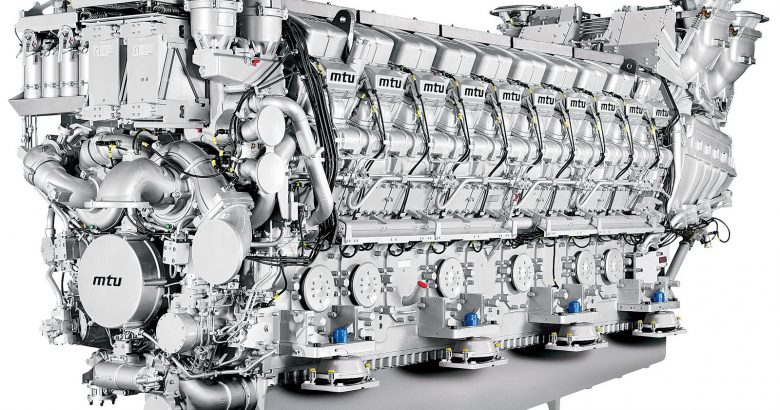
The Tumultuous History of the Diesel Engine
By now, just about everyone knows about the Volkswagen “diesel scandal.” For those who don’t, Volkswagen recently got involved in a high-profile automotive scandal when it was discovered that they had fudged the software in their diesel powered cars so that they would meet emission requirements. This was a massive black eye for Volkswagen and the saga is still evolving as this article is written.
As It turns out, though, this is just the latest episode in the controversy and intrigue surrounding the diesel engine. Since its development in the late 1800s, the Diesel engine has been involved in quite a few episodes of intrigue. In fact, this technology is storied enough that it could be the basis for a good crime story, or even movie!
Diesel deported
Rudolf Diesel was born in Paris in 1858. His Bavarian parents had settled in France where his father was a leather goods manufacturer. When Franco-Prussian war began, the Diesels were deported from France and fled to London. Rudolf was soon sent to live with relatives in Augsburg. When he was 12, Diesel studied at the Technische Hochschule of Munich, a well-known trade school. He graduated at the top of his class and this technical degree lay the groundwork for all that was to come.
Diesel nearly kills himself
Diesels first job was working in the R&D department at Linde, a refrigeration company in Berlin. He was an excellent engineer. However, his ambition to branch out beyond refrigeration technology, led to efficiency experiments with steam engines. Diesel, with a deep understanding in thermodynamics, was certain he could create an engine that didn’t waste heat from the combustion process. He started prototyping right away. During one of his experiments, however, he was nearly killed when a prototype ammonia vapor steam engine exploded. His recovery took many months, and for some period of time it was doubtful whether he would return to engineering.
Diesel didn’t really invent the diesel
The Diesel engine as we know it could be considered just a minor variation on the “hot-bulb” engine. In 1890, two years before Diesel was awarded his engine patent, hot-bulb engines were being built and sold. They ran on paraffin oil, a fuel that’s quite similar to modern kerosene. The biggest difference between Diesel’s designs and the hot-bulb engine is the compression ratio. Diesel used high compression to kick off ignition, while the hot-bulb engine ignited the fuel by spraying it into a red-hot pre-chamber.
The first American diesels – built by beer
The first diesel licensee in the United States was Adolphus Busch. In 1890, Busch set up the Diesel Motor Company in New York City to make engines. Later started the American Diesel Engine Company, which eventually relocated to St. Louis, MO. After that, Busch started yet a third diesel engine company with Sulzer Brothers, a Swiss company. Busch-Sulzer diesels powered early submarines and other US Naval vessels.
Rudolf Diesel May Have Been Murdered
By 1913, WWI was ramping up and the Diesel engine was powering the gears of war. German U-Boats were already using diesel engines when Diesel boarded a ferry Dresden. He was en-route to a meeting in England to discuss using diesel power for Royal Navy submarines, and he never arrived. It is rumored he was murdered on the orders of the German Emperor, Wilhelm II.
Or perhaps he committed suicide
Before his departure to England, Diesel gave his wife a package he told her to open after a week. It was filled with cash and financial statements showing the near-bankrupt state of the family’s finances. Perhaps Diesel was distraught and committed suicide.
Diesel killed the iconic steam locomotive
By the early 20th century, the steam locomotive was fully mature technology but it was very maintenance intensive. By the 1940s, diesel-electric locomotives were quickly replacing their steam-powered forbearers. The romance of the Age of Steam gave way to the clinical, efficient era of diesel-powered railroading.
Diesel gives GM a black eye
The late 1970s were an era of great economic upheaval. The Arab oil embargo (1973) caused fuel shortages and the public began to demand better fuel economy. Diesel looked like the perfect solution. Diesel engines achieved tremendous fuel economy and they could be built for long-life.
By ’79, GM had developed several diesel versions of its gasoline engines. Both the 260 and 350 cubic inch Oldsmobile V8s were converted to diesel. It could have gone well, but there were problems. Head bolts pulled out, water and particles killed injection pumps because bean-counters axed much-needed fuel filters, and people nation-wide were stuck with lemons.
Hyundai joins the club
In 2007, Hyundai introduced the i30 a sporty sedan with a 1.6 litre turbocharged diesel engine. Our friends at Central Avenue Hyundai of Hartsdale, a local Hyundai dealer in Hartsdale, NY, say this signaled a bit of a renaissance for Hyundai. It seemed that the Korean brand was no longer content to pump out inexpensive cars lacking the cutting edge technology of other imports. The i30 has been a big success for Hyundai and today it is available in Europe and Australia.
The Volkswagen scandal
Volkswagen has been behind the diesel engine for decades but they recently got involved in a high-profile scandal when it was discovered that they had fudged the software in their diesel powered cars. With altered software, the cars looked like they passed emission checks when they actually didn’t. Volkswagen quickly admitted their fault and today they are spending billions of dollars to fix the cars and refund certain buyers.